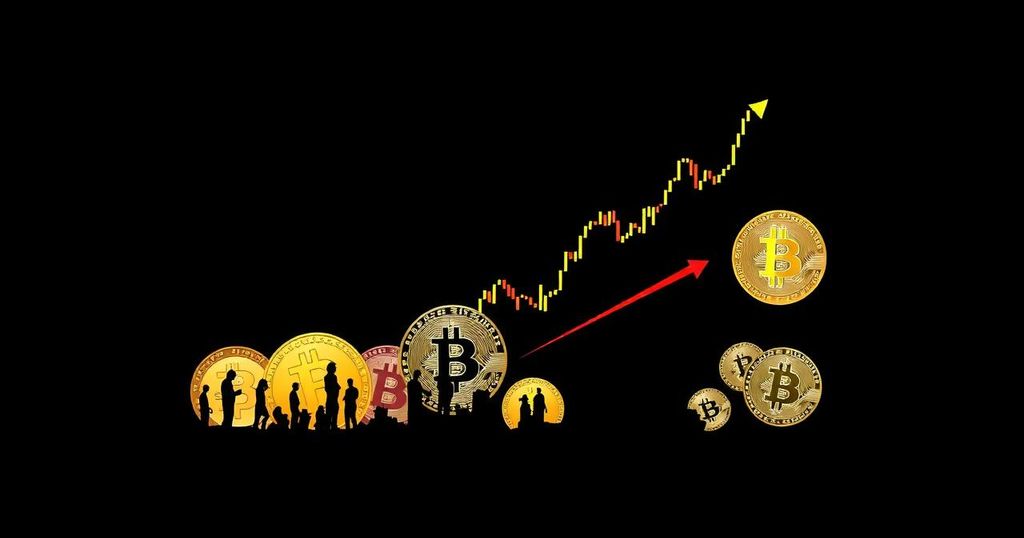Impact of Federal Reserve’s Interest Rate Cuts on Bitcoin and Cryptocurrency Investments
Summary
The Federal Reserve is anticipated to cut US interest rates by either 25 or 50 basis points today, prompting Bitcoin’s price to spike by 5% to $61,000. Bitcoin ETFs attracted $250 million in investments two days before the Fed’s decision. The market sentiment, reflected in Bitcoin’s Fear & Greed Index, has shifted amid uncertainty regarding the Fed’s choice. Despite optimism, sell-offs in the $61,000 to $62,500 range warrant cautious investor behavior as macroeconomic events unfold.
The Federal Reserve System (Fed) is expected to announce a reduction in US interest rates by either 25 or 50 basis points during the Federal Open Market Committee (FOMC) meeting scheduled for today. In response to this anticipated decision, Bitcoin ($BTC) has experienced a notable surge, rising approximately 5% to $61,000, which has also positively influenced prices of other major cryptocurrencies. Additionally, Bitcoin Exchange-Traded Funds (ETFs) raised $250 million in investments on Monday, just two days before the Fed’s final decision. As the market awaits the FOMC meeting set for 20:00 CET, it is worth noting that the expectation for a rate cut has shifted; there is now a 65% likelihood of a larger 50 basis points cut instead of the previously anticipated 25 basis points. Should the Fed indeed opt for a 25 basis points cut, the implications for consumer borrowing and economic growth could be less significant, potentially leading to a slower economic pace. In the previous week, Bitcoin’s Fear & Greed Index has showcased uncertainty, fluctuating between ‘Neutral’ and ‘Fear’, a significant recovery from the ‘Extreme Fear’ status it experienced just ten days prior. This index often reacts to major global events, as seen during the initial panic over the COVID-19 pandemic, and decreasing interest rates may offer a necessary boost to the crypto market. Lower interest rates typically facilitate access to funds, encouraging investments in riskier assets such as cryptocurrencies. Further reinforcing positive sentiment, Bitcoin ETFs have seen inflows of $250 million due to renewed investor interest following the expected interest rate cut. Noteworthy asset managers such as Fidelity, BlackRock, and Grayscale launched SEC-approved Bitcoin ETFs earlier in the year, leading to an initial wave of investments. However, recent fluctuations, including a significant loss of over $287.7 million on September 3, had dampened investor enthusiasm prior to this resurgence. Despite the optimistic trends, caution is warranted. Analysis of Binance’s BTC-USDT order book indicates high sell-off activity in the $61,000 to $62,500 range. This market behavior signals that while momentum may be building, the potential for volatility remains significant as market conditions are tested during macroeconomic announcements.
The intersection of macroeconomic policies, specifically actions taken by the Federal Reserve regarding interest rates, significantly impacts the cryptocurrency market. Rate cuts can lead to lower borrowing costs, which may subsequently encourage investment in high-risk assets, such as cryptocurrencies. Bitcoin’s performance often reflects broader economic trends and investor sentiment, leading to interconnected movement with other cryptocurrencies. The recent adjustment of expectations regarding the Fed’s rate cuts has heightened interest in Bitcoin and related ETFs, fostering fluctuating investment patterns and market dynamics.
In summary, the anticipated interest rate cuts by the Federal Reserve hold substantial implications for the cryptocurrency market, particularly for Bitcoin and Bitcoin ETFs. The expected surge in investments due to lowered borrowing costs coupled with volatility indicated by sell-off patterns suggests that market participants should remain cautious even amid positive trends. Ultimately, the Fed’s final decision will likely dictate the short-term trajectory of Bitcoin and the crypto landscape following today’s FOMC meeting.
Original Source: techreport.com








Post Comment